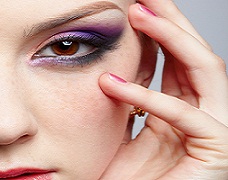Mole Check
information
Moles vary significantly in numbers and size between individuals. The average number of moles in people with white skin is 30 but some people may have as many as 400. Some moles may be 2mm in diameter whilst others are well over 5mm.
Performing regular skin self-exams
helps people recognize the
early warning signs of melanoma
Dermatologists recommend that everyone perform regular skin self-exams.
Melanoma is a disease that is particularly important in Australia with incidence rate of melanoma in Australia is three times as higher than in the USA. Melanoma is the fourth most common cancer in Australia with one in 14 males and one in 23 females expected to develop melanomas in their life time. Its incidence has been increasing by 16% in males and 24% in females over the last decade.
Mole checking involves a consultation and examination with a experienced GP or qualified dermatologist. They should be able to identify if any moles are abnormal .
Get the reassurance that your moles or skin lesions are normal and can be removed by us.
The easiest way to tell a mole needs some medical attention is to remember the mnemonics.
The letters mean:
| Asymmetry - One half of
the mole is different than the other.
|
 |
| Border Irregularity - At the edge, or border, melanomas are usually ragged, notched or blurred |
 |
| Color - Benign moles can be any color, but melanoma often has a variety of hues and colors within the same mole |
 |
| Diameter - melanomas are usually greater than 6mm (the size of a pencil eraser) when diagnosed, but they can be smaller |
 |
| EVOLVING - a mole or skin lesion that looks different from the rest or is changing in size, shape, or color |
 |
Mole check Benefits
- Reassurance and peace of mind that your moles are safe or referral for treatment if necessary
- Advice on what to look for as moles and skin cancer do evolve with age
Doctor Letter
Download Moles Information Sheet and letter for a doctor to save time at consultation.





